Warm Season Annual Forage Yield and Quality with Nitrogen

A printable PDF version is available.
by Marilyn Dalen, Eeusha Nafi, and Jessica Torrion
Northwestern Agricultural Research Center, Montana State University, Kalispell, Montana
INTRODUCTION
Hay forage is grown on 2.9 million acres in Montana (USDA-NASS, 2023) and half of that is straight alfalfa. Diversifying forage production by growing annual warm season grasses can increase forage availability and improve animal nutrition. Warm-season grasses are much more tolerant of poor environmental conditions (e.g., low soil pH, low fertility, drought) than most cool-season grasses. Nitrogen (N) fertilization is considered essential in grassland farming to improve forage yield, quality and composition, and dependent on these, the voluntary dry matter (DM) intake by livestock (Ghosh et al. 2017). As per Montana State University guideline (Jacobsen et al. 2003) grass forages require 25 lb N/ton of hay. We investigated the effects of N rate on selected warm season annual forage yield and quality under both rainfed and irrigated conditions.
METHODS
This study was conducted in 2020 and 2021 on Flathead fine sandy loam soil in Creston, Montana, under rainfed and irrigated conditions. Warm season grasses planted were pearl millet (Tifleaf3), teff (Corvallis, 20BAR_ET), sudangrass (Piper), and sorghum-sudan (AS6402, S5501, S6504). Nitrogen as urea and monoammonium phosphate was applied pre-planting, incorporated by tillage, and the soil packed to improve seed-soil contact. Fertilizer rates were based on available soil N to 3-foot depth, an estimated 20 lb N/acre N credit from the prior faba bean crop, and expected soil organic matter mineralization, to reach 5 levels of total available N (100 to 300 lb N/acre). Total rainfall was 6.7 and 3.8 inches in 2020 and 2021, respectively, from planting to harvest. The irrigated plots received 5.8 and 8.0 inches of water in 2020 and 2021, respectively, using overhead sprinklers. Forage was harvested when at least 50% of the forage was heading. Subsamples were gathered for moisture and for forage quality determinations.
RESULTS
Under rainfed conditions, forage yields decreased above 150 lb available N/acre, yet there was no difference in yield between 100 and 150 lb available N/ (Fig. 1A). Forage yields increased with irrigation both years, with optimal forage yields at 112 lb N/acre (Fig. 1B). Higher yields were reached in some plots in both 2020 and 2021, but yields were not consistently higher with more N. Pushing yields with high N and 8 inches of irrigation is risky. They are probably not economically feasible considering fertilizer and irrigation costs. There is also increased risk of high forage nitrate levels, nitrate leaching, and soil acidification if predicted forage yields are not reached.
Total forage yield was influenced by the interaction between environment and variety (P<0.05; Fig. 2A and 2B). Among the warm-season forage grasses, sorghum-sudan types showed higher forage yield under irrigation in 2020. The teff species had lower germination rates than others in both years. There were no differences among forage species in their response to soil N level.
Forage nitrate content increased with increased N levels and irrigation in 2020 (Fig. 3). Irrigation typically helps increase N availability in the soil, thus higher N uptake by the plants. Data for 2021 are not shown as samples molded and nitrate results were deemed inaccurate. Forage crude protein increased with increased N in both years (Fig. 4). Acid detergent fiber (ADF) decreased with increased available N both years (Fig. 4). Low ADF indicates good quality feed because of its higher digestibility.
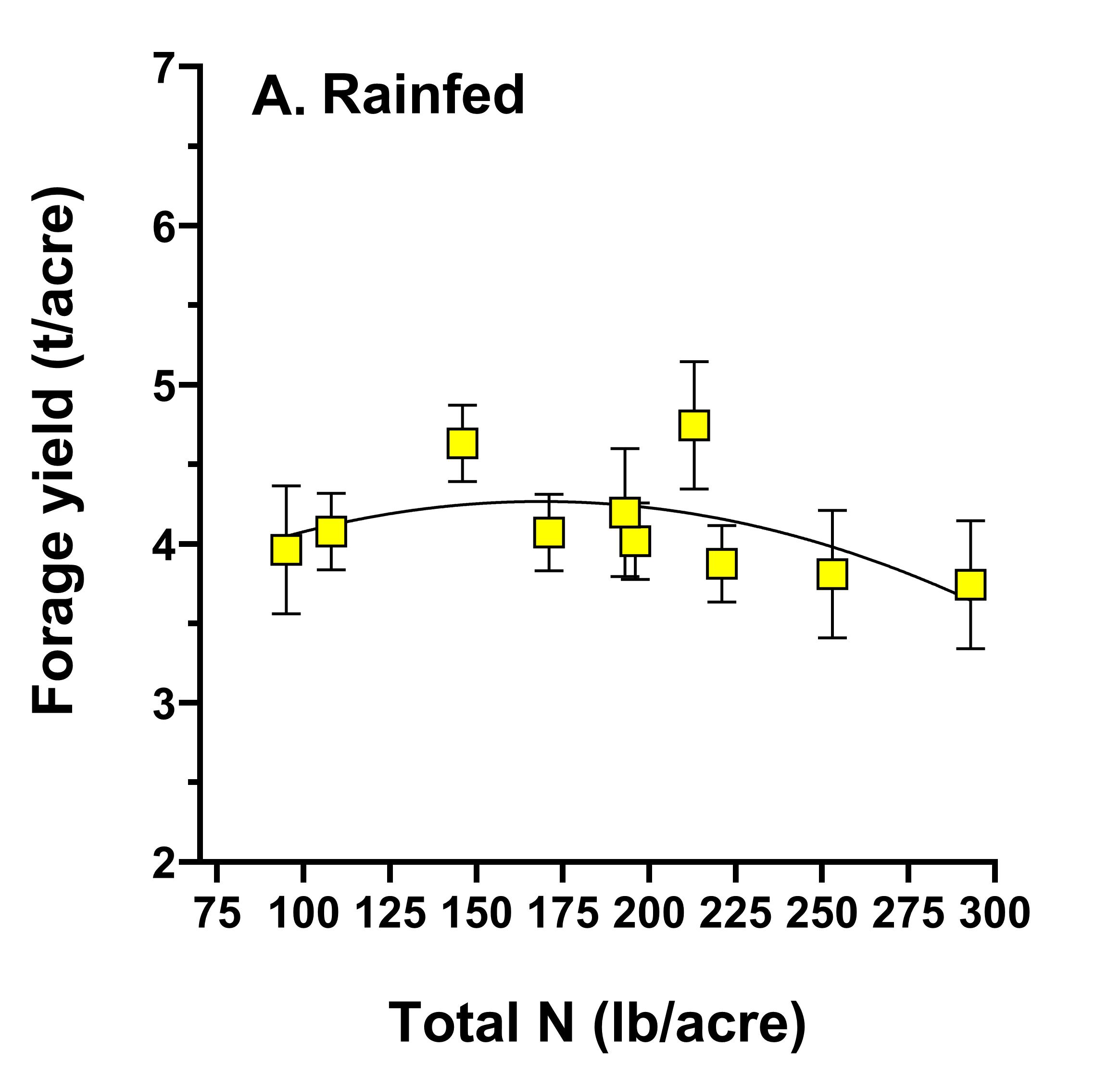
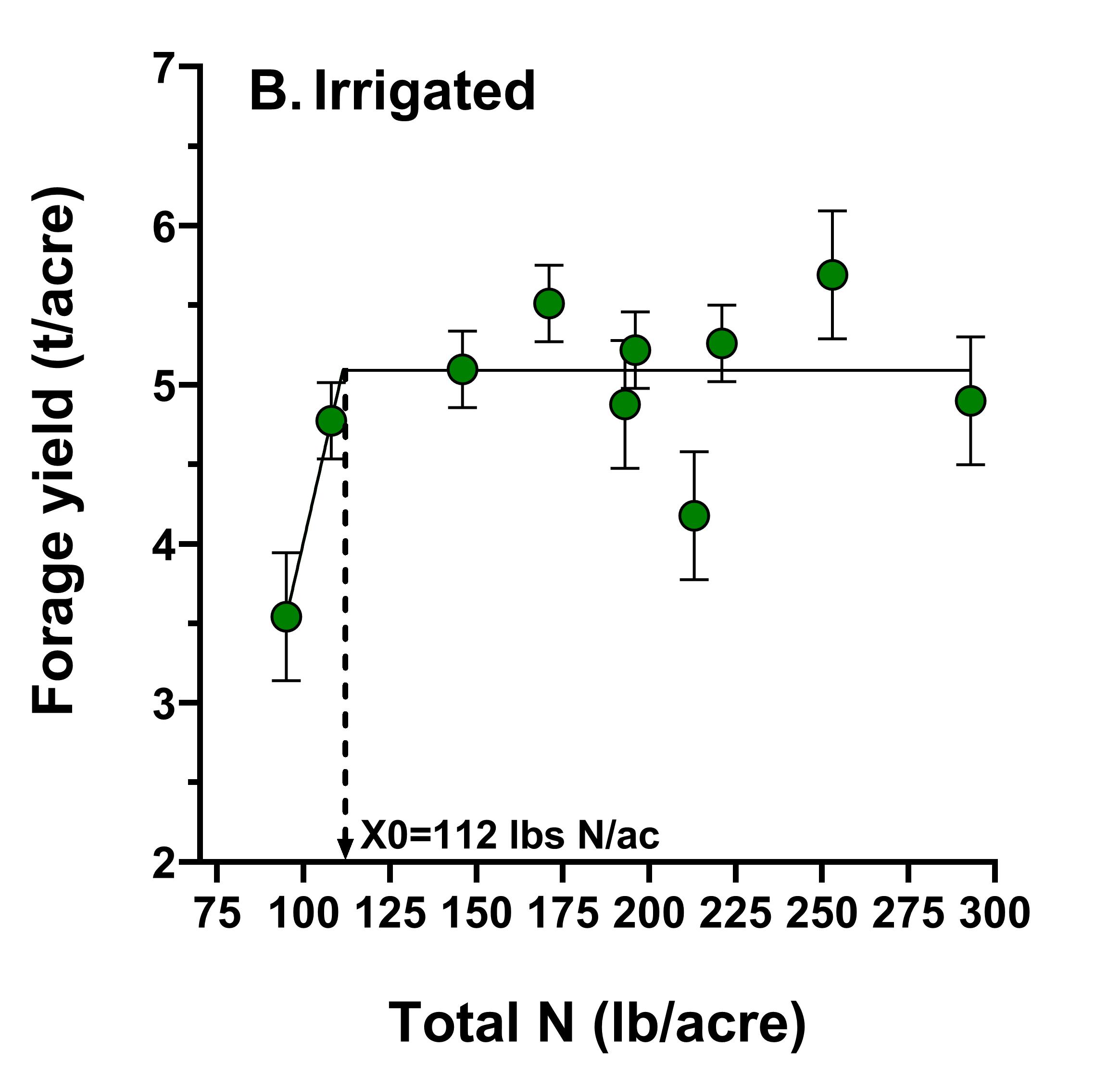
Figure 1. Forage yield under rainfed (A) and irrigated (B) conditions in 2020 and 2021. Error bars are the standard error. X0 is the N level for optimal yield under irrigated conditions.
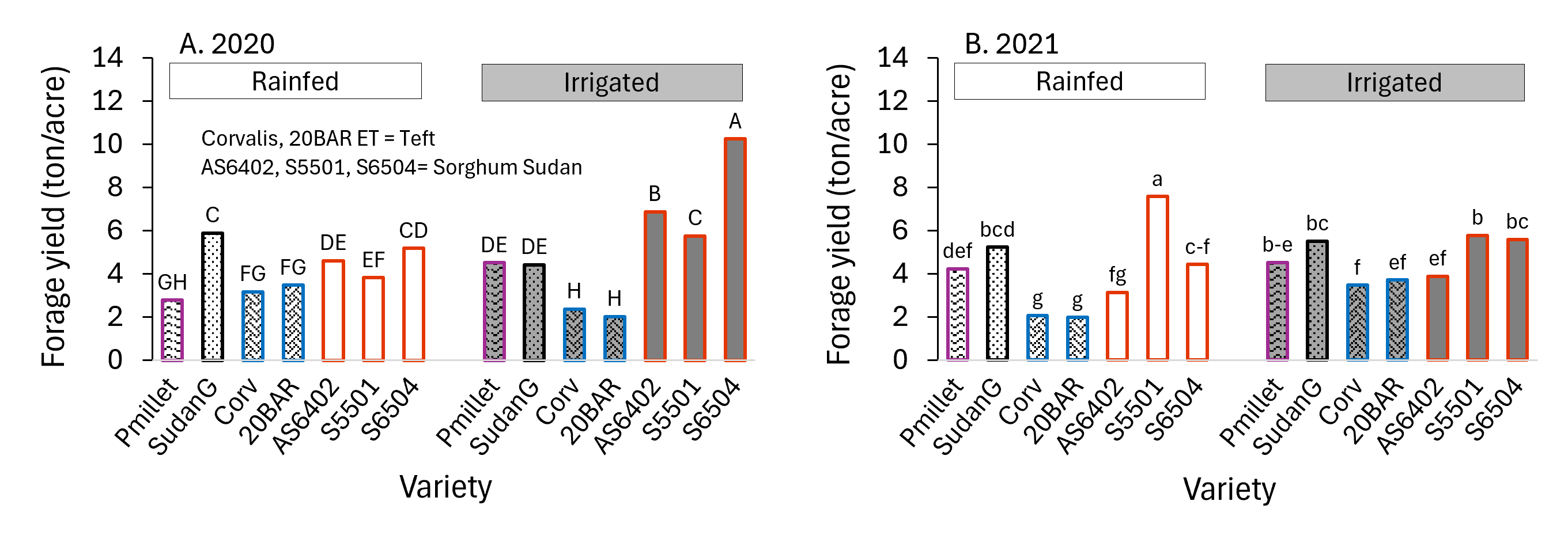
Figure 2. Forage yield by grass species under irrigated and rainfed conditions in 2020 (A) and 2021 (B). Bars within the same year that have at least one letter in common are equal with 95% probability.
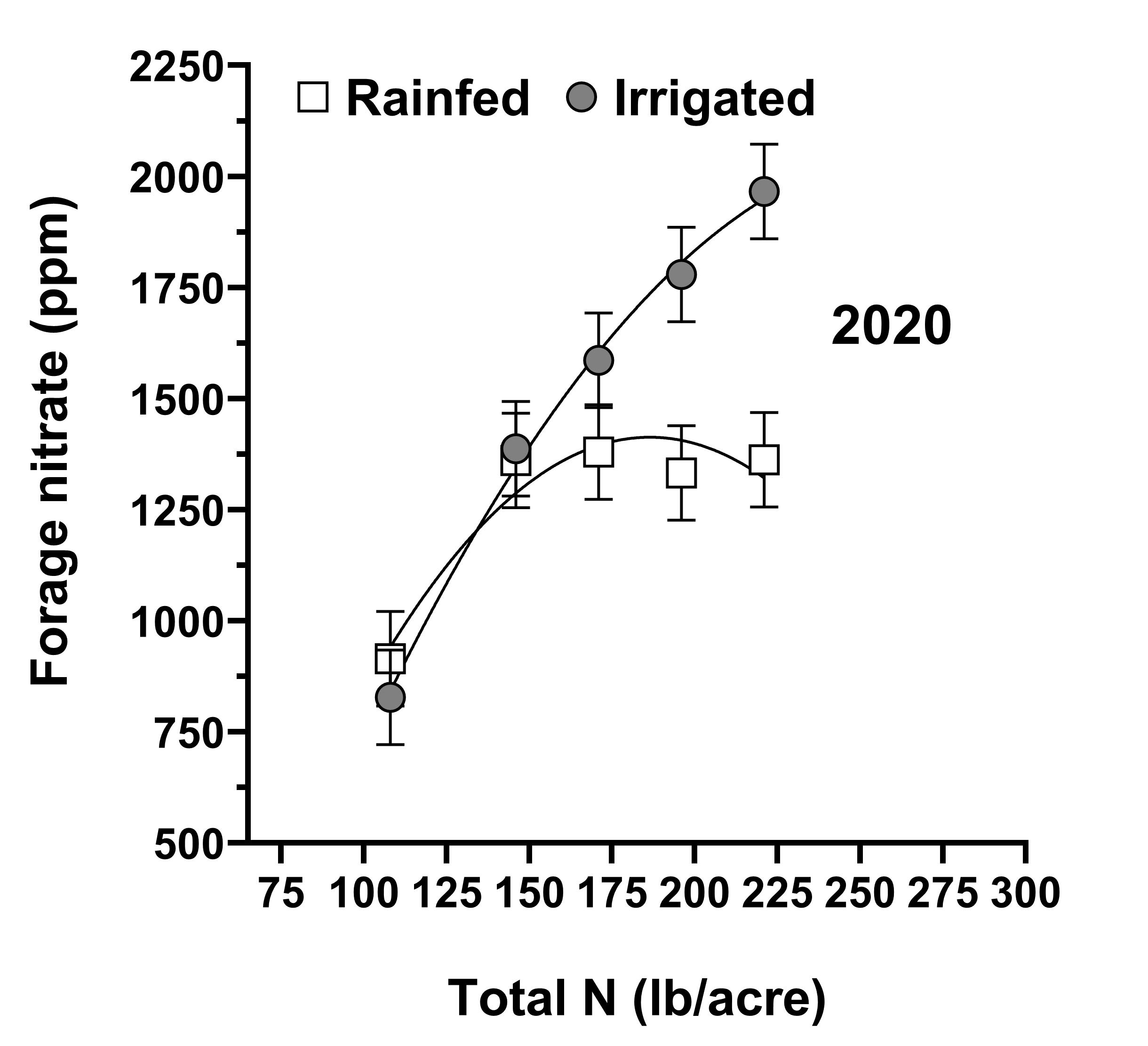
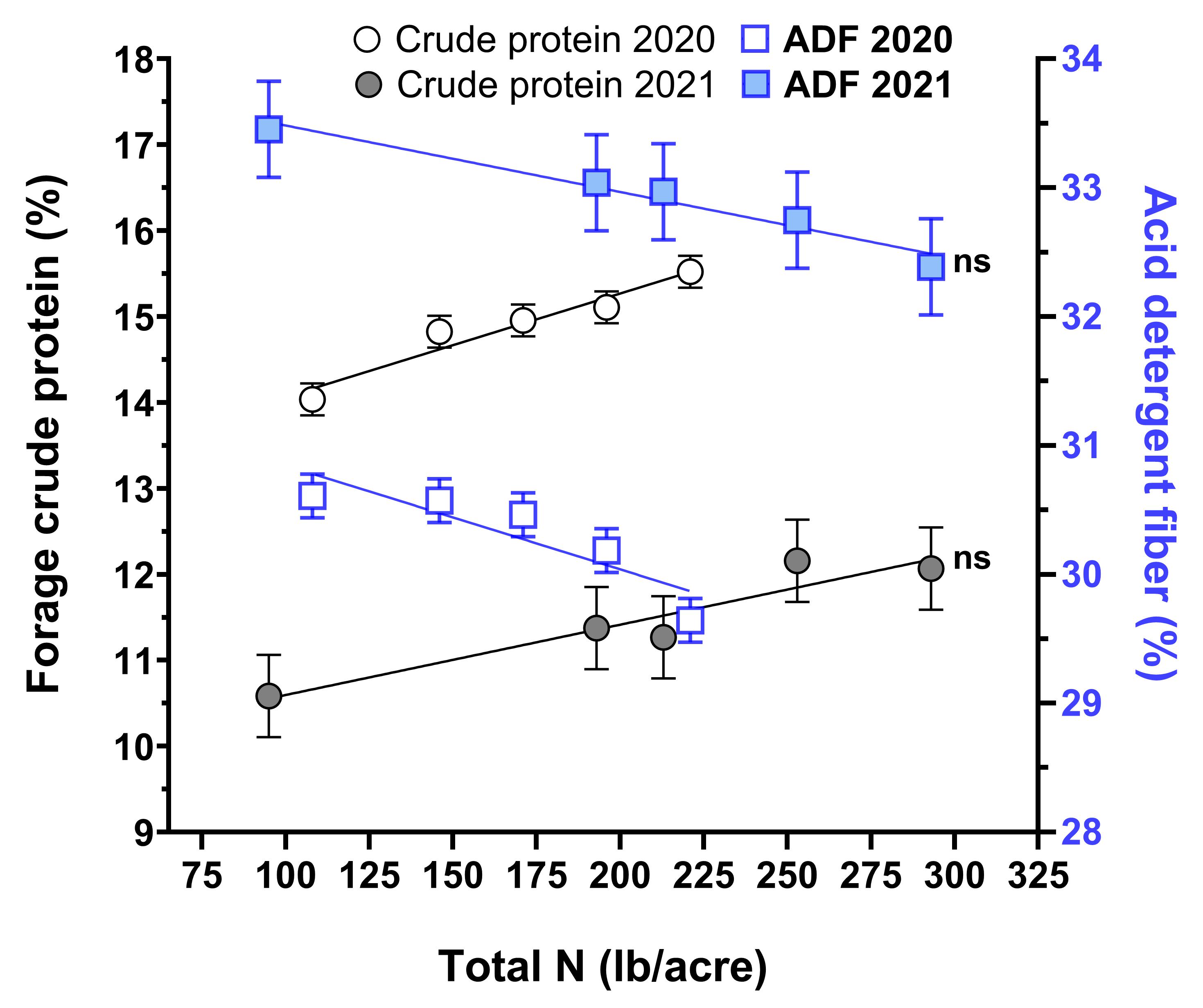
Figure 3. Forage nitrate under irrigated and rainfed
conditions in 2020. Error bars are the standard error.
Figure 4. Forage crude protein and acid detergent fiber (ADF) under irrigated and
rainfed conditions in 2020
and 2021. Error bars are the standard error.
FERTILIZER FACTS
- Annual warm season forages reach optimal yields around 100 lb N/acre total available N, especially under rainfed conditions. Higher available N under rainfed conditions reduced yields.
- Forage crude protein increased with increasing N levels.
- Forage nitrate increased with N level and is further increased with irrigation.
- Acid detergent fiber (ADF) decreased with increased soil N availability.
ACKNOWLEDGEMENTS
We thank theMontana Agricultural Experimental Station and theMontana Fertilizer Advisory Committee for funding support.
REFERENCES
Ghosh, P. K., et al. 2017. Nitrogen Dynamics in Grasslands. In The Indian Nitrogen Assessment: Sources of Reactive Nitrogen, Environmental and Climate Effects, Management Options, and Policies. edited by Y. P. Abrol, et al. pp. 187–205. Duxford, UK: Elsevier. https://doi.org/10.1016/B978-0-12-811836-8.00013-6.
Jacobsen, J., et al. 2003. Fertilizer Guidelines for Montana Crops. https://store.msuextension.org/Products/Fertilizer-Guidelines-for-Montana-Crops-EB0161__EB0161.aspx
USDA-NASS. 2023. Montana 2023 agricultural statistics. Helena, MT: USDA-NASS Mountain Region https://www.nass.usda.gov/Statistics_by_State/Montana/Publications/Annual_Statistical_Bulletin/2023/Montana-Annual-Bulletin-2023.pdf
Edited by Clain Jones, MSU Extension Soil Fertility Specialist, and Kathrin Olson-Rutz, Research Associate.
Posted February 2025
